Setting a prior for the random intercept variance and fixed effects
Thierry Onkelinx
2019-01-21
Source:vignettes/prior.Rmd
prior.RmdSimulating random intercepts
simulate_iid() generates a number of iid random intercepts from a zero mean Gaussian distribution with variance σ2. The variance is either specified through the standard deviance σ or the precision τ=1/σ2. Specifying both leads to an error, even if both arguments have compatible arguments.
library(inlatools)
str(x <- simulate_iid(sigma = 1))
#> 'sim_iid' num [1:1000] 0.228 -0.491 -0.998 -0.641 -0.87 ...
#> - attr(*, "sigma")= num 1
str(y <- simulate_iid(tau = 100))
#> 'sim_iid' num [1:1000] 9.05e-06 -6.23e-02 2.33e-02 -6.30e-02 1.31e-02 ...
#> - attr(*, "sigma")= num 0.1simulate_iid(sigma = 0.1, tau = 100)
#> Error: either 'sigma' or 'tau' must be NULLInspecting simulated random intercepts
The default plot() on the simulated random intercepts yields a density with indication of the baseline and quantiles. The plot title displays the standard deviation, variance and precision used to simulate the random intercepts. This makes it easy to simulate the random intercept based on a standard deviation and get the precision required for the prior.
plot(x)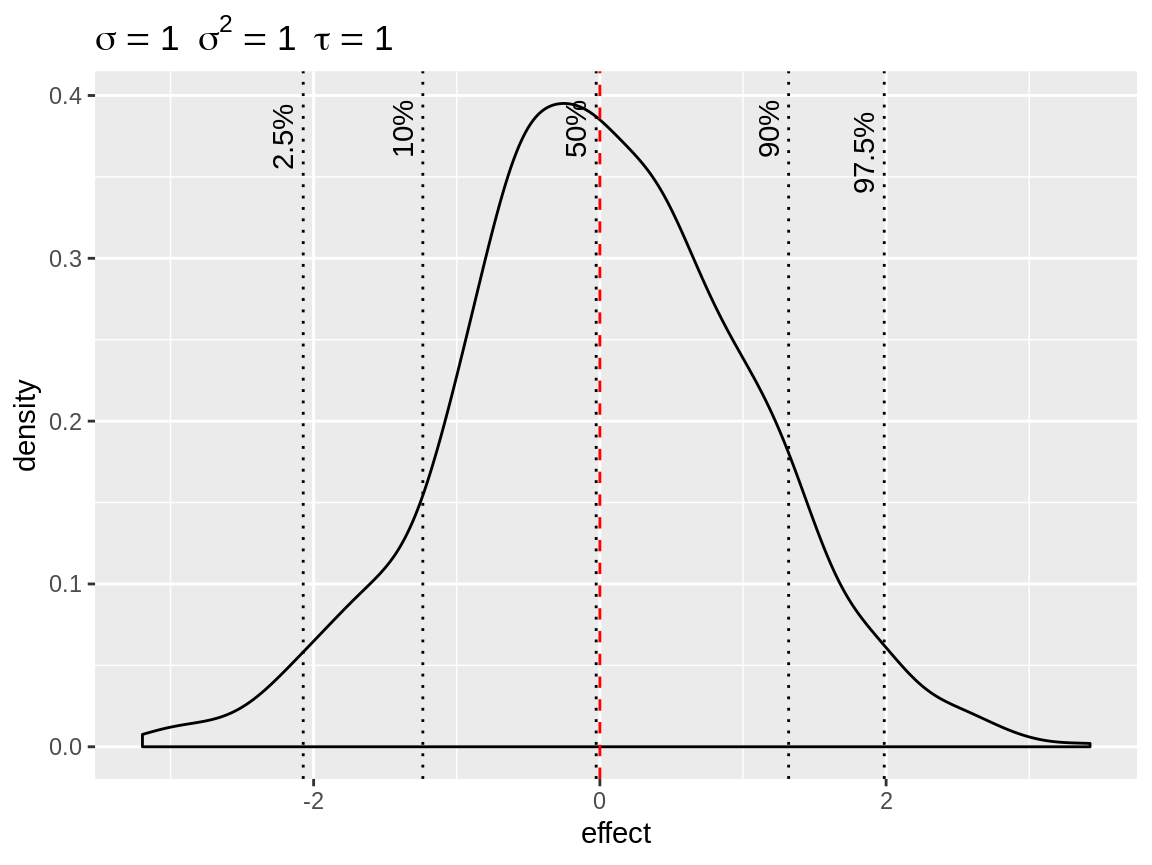
Default plot of simulated random intercepts.
Link functions
Often we are using distributions were the relationship between the mean and the linear predictor is defined through a link function. Therefore we added a link argument to the plot function. This will apply the back transformation to the random intercepts, making it easier to interprete their effect on the original scale.
plot(x, link = "log")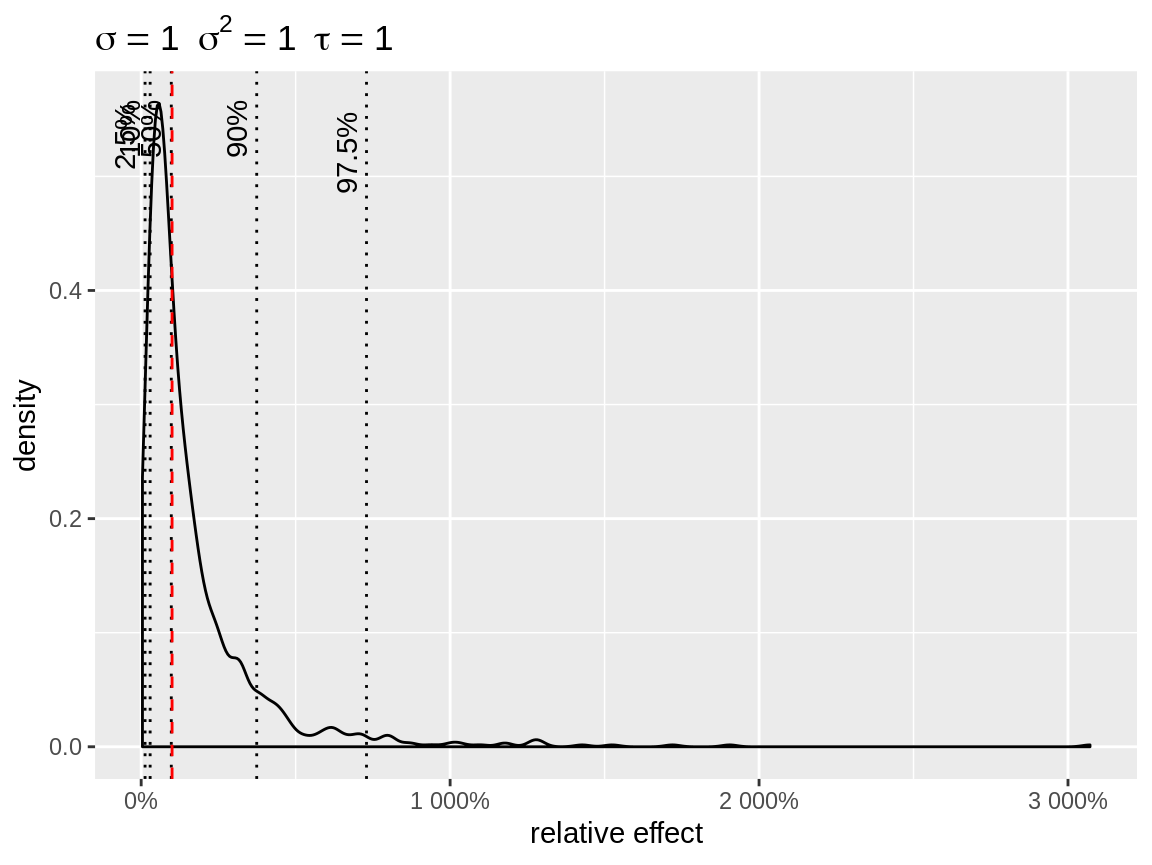
Default plot with log-link
The plot shows the effect of the random intercept + the baseline. The default baseline are chosen to get an informative plot. link = "identity uses baseline = 0 as default. link = "log" uses baseline = 1, so that the random intercepts can be interpreted as relative effects. In case of link = "logit", the absolute effect on the natural scale, depends on the baseline. Therefore we use baseline = seq(0, 0.5, length = 21) as default. When more than one baseline is defined, a line plot is used instead of a density. Each random intercept is depicted as a separate line.
plot(x, link = "logit")
Default plot with logit link
The user can override the default baseline. So if you want a density plot in combination with link = "logit", then you need to specify a single baseline. Note that the baseline is always expressed on the natural scale.
plot(x, link = "logit", baseline = 0.7)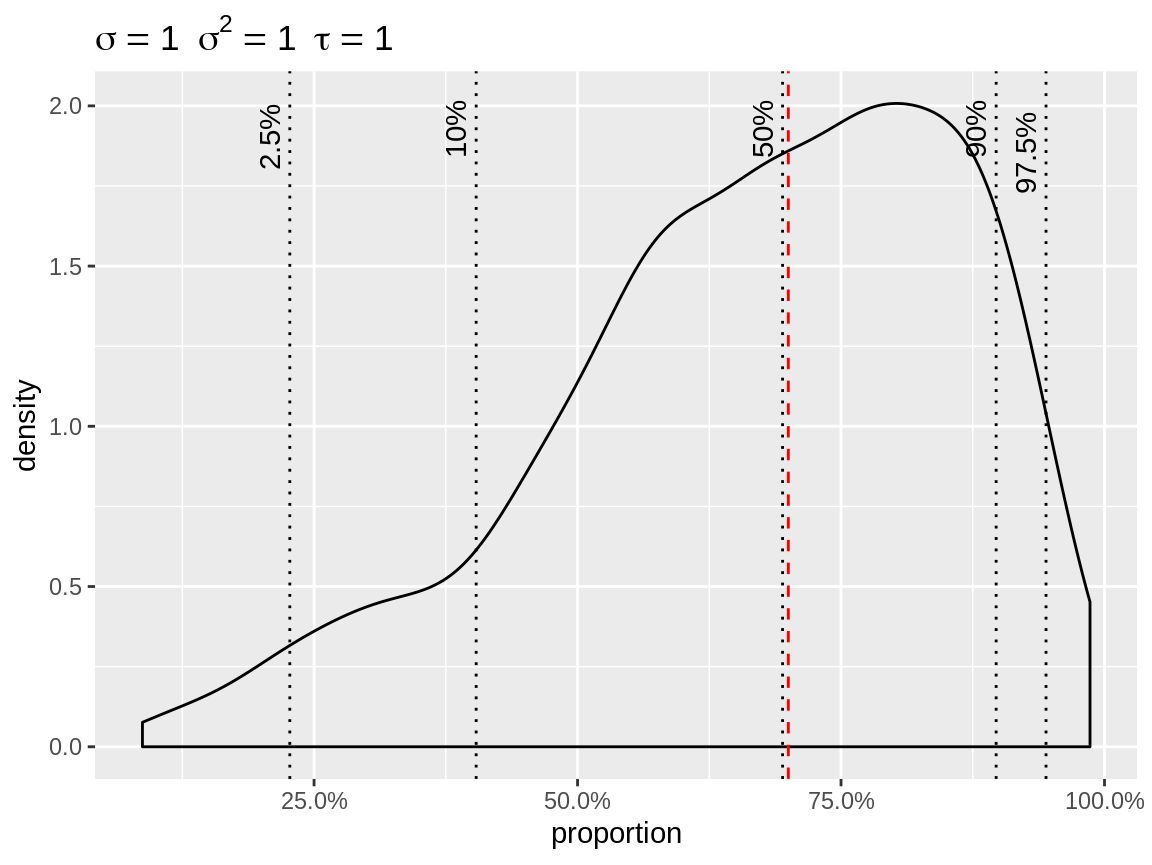
Density plot with logit link
Likewise you can get a line plot for link = "identity" or link = "log" if you specify a vector of baselines. The result of plot() is a ggplot() object, so you can alter it using standard ggplot functions.
library(ggplot2)
plot(x, link = "log", baseline = c(0.01, 0.1, 0.5)) +
scale_x_log10("baseline") +
scale_y_log10("effect")
#> Scale for 'x' is already present. Adding another scale for 'x', which
#> will replace the existing scale.
#> Scale for 'y' is already present. Adding another scale for 'y', which
#> will replace the existing scale.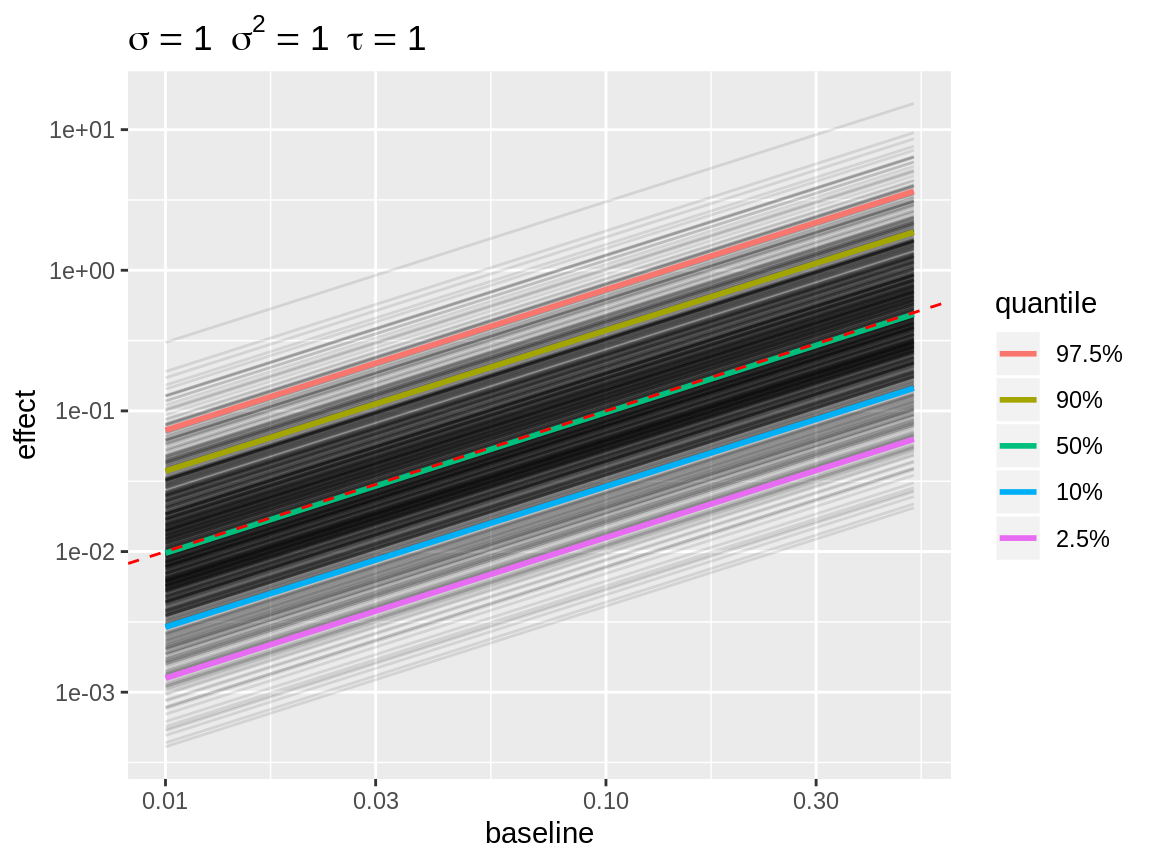
Line plot with log link
Centering and quantiles
By default the random intercepts are center so that their mean matches the baseline. The alternative are center = "bottom" and center = "top". In those cases, the random effects are centered to that the baseline matches the lowest (center = "bottom") or the highest (center = "top") quantile. This is useful in case you want to get an idea of the difference between the lowest quantile and some other point (e.g. the largest quantile). The plot below illustrates that ratio of more that 50 between extreme random intercepts are not uncommon when σ=1 with a log link.
plot(x, link = "log", center = "bottom")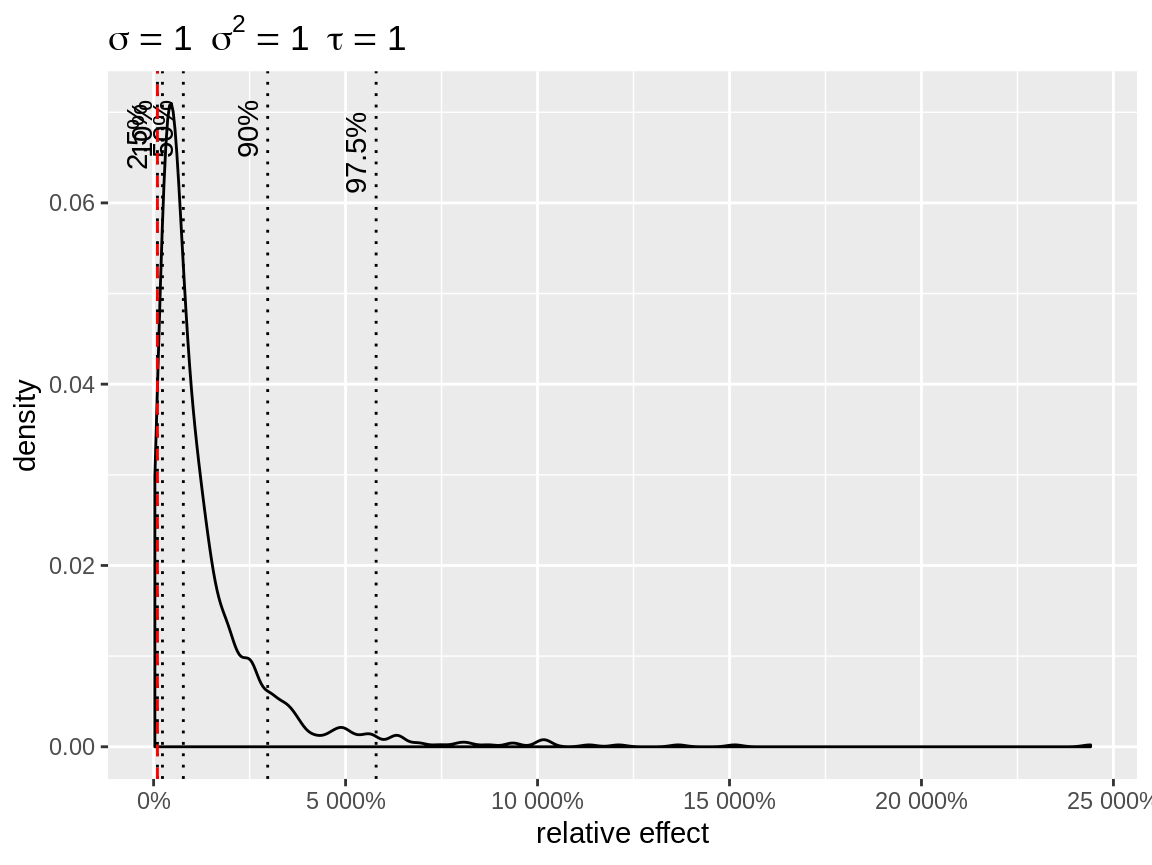
Density of the random effects after centering to the lowest quantile.
The user has the option to specify custom quantiles.
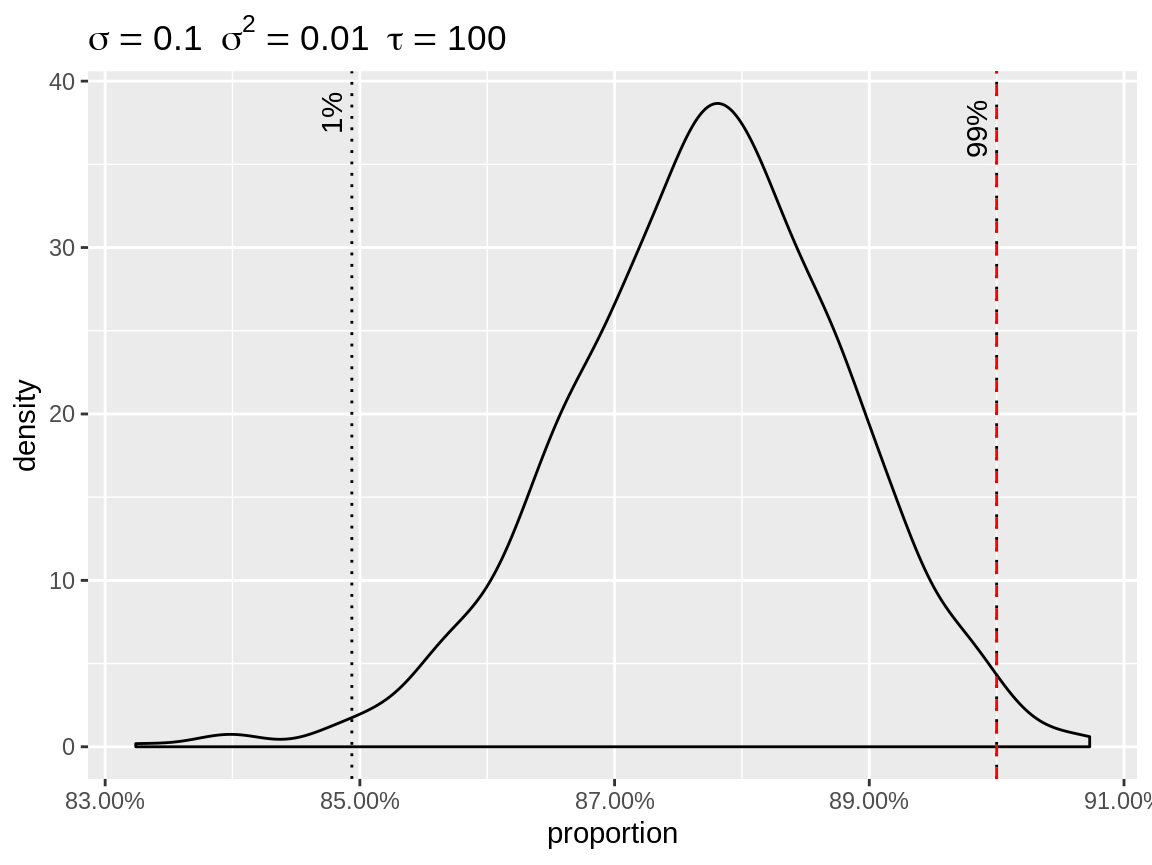
Density of the random effects after centering to the highest quantile.
Priors for fixed effects
INLA assumes Gaussian priors for the fixed effects. Hence we can use simulate_iid() to get a feeling of these priors too. Below we give two examples. The first shows the default prior for fixed effects. The second one shows an informative prior for a fixed effect.
fixed <- simulate_iid(tau = 0.001)
plot(fixed)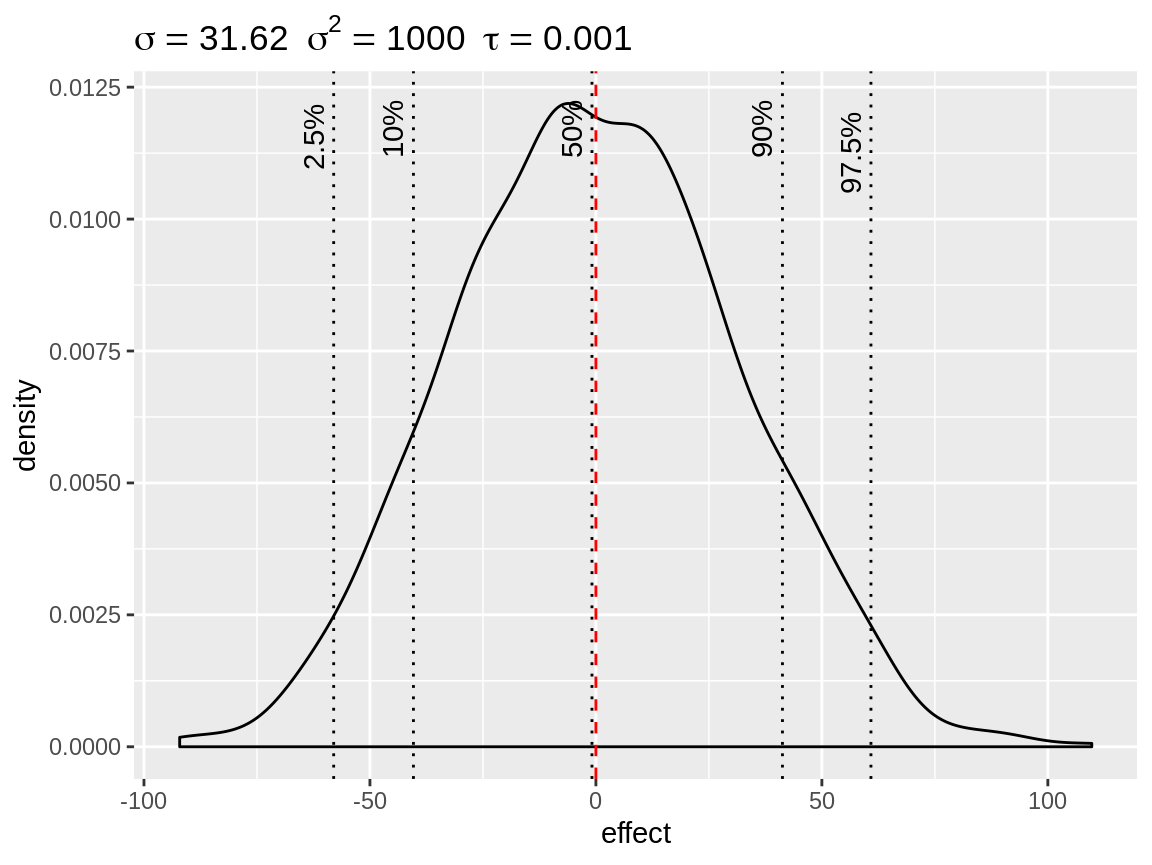
Simulated density of the default fixed effect prior with mean = 0 and precision = 0.001
fixed <- simulate_iid(tau = 0.1)
plot(fixed, baseline = 14)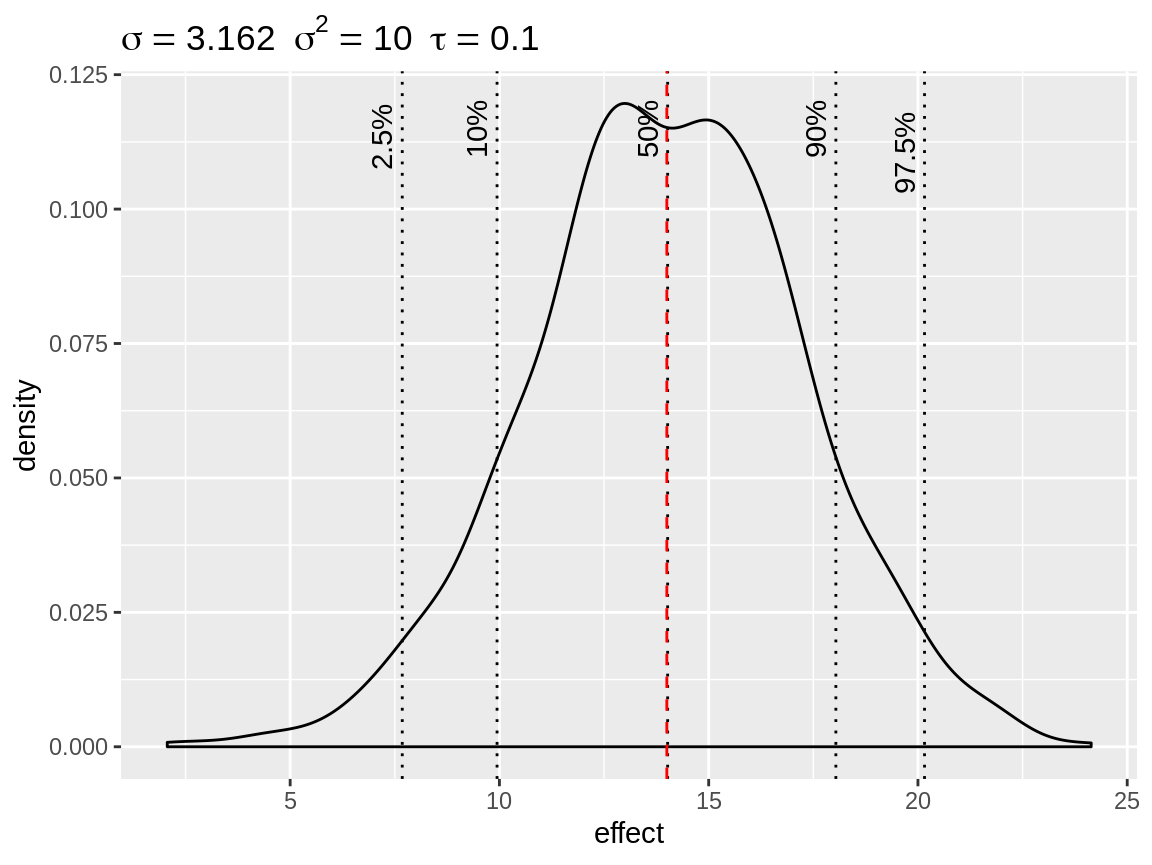
Simulated density of an informative fixed effect prior with mean = 14 and precision = 0.1